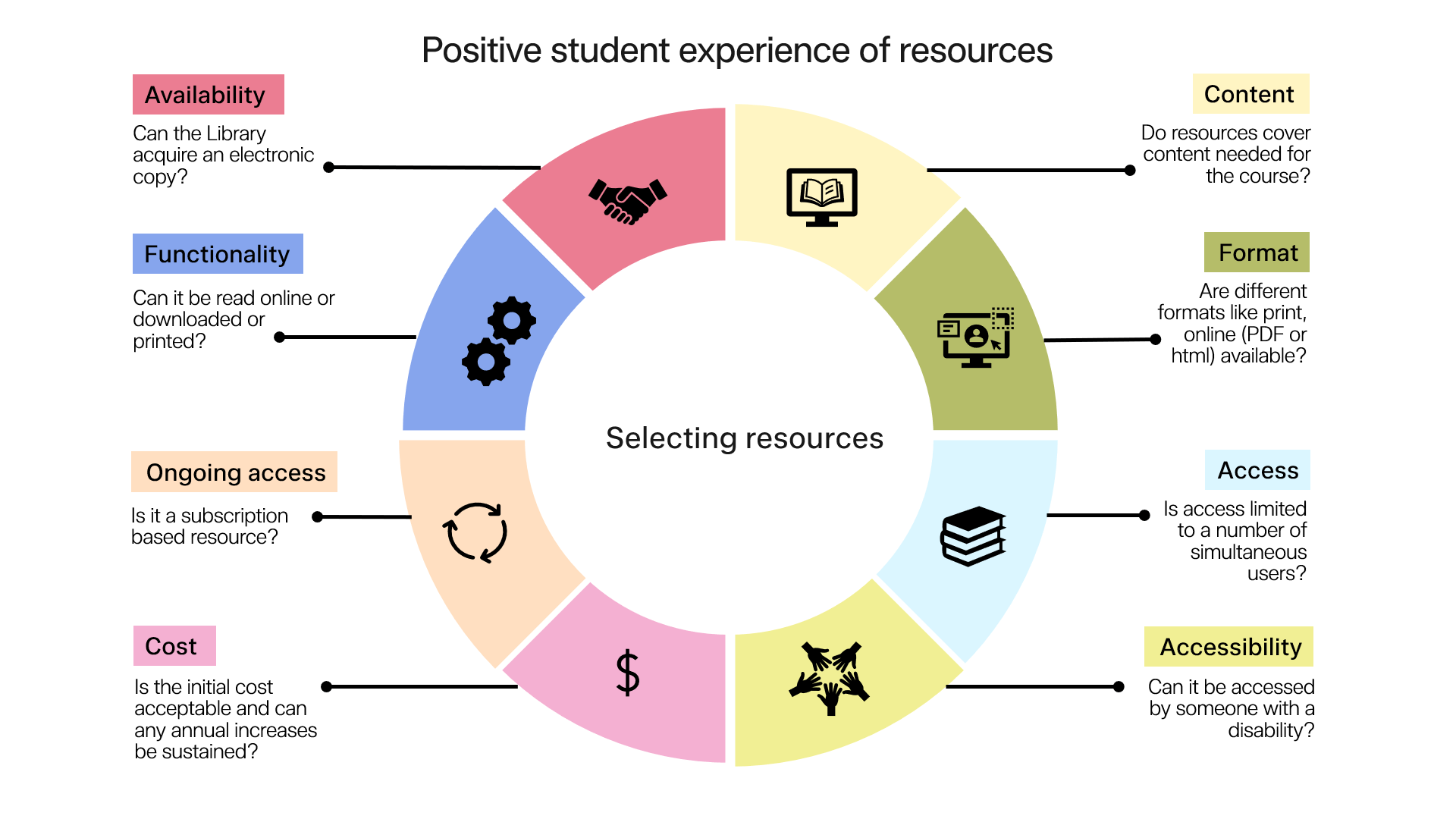What to consider when selecting resources
There are several factors, beyond content, that influence positive student learning experiences and ensure the University meets TEQSA requirements as outlined in the Learning Resources and Reading lists guideline. Partner with us to enable timely access to resources allowing students to focus on learning.

Choose required or recommended readings to support your teaching and learning needs from a broad range of our online resources.
Different eText and eBook models impact on the number of students that can access an eBook at any one time.
- We try to maximise the availability of required readings subject to cost and publisher access model.
- Recommended readings are to be selected from our extensive range of available resources. Other recommended readings will be acquired where possible subject to budget and resource availability.
- Some eBooks are only available for individual purchase which restricts us from buying these for the collection.
Most eTexts and eBooks in our collection indicate the access level available. If you need to discuss the level of access contact your librarian.
Get access to streaming video collections that cover many subject areas and include feature films, documentaries and television programs. Available functionality includes clipping and embedding content. Contact us if you can’t find what you are looking for in these collections.
In addition to library content, free videos can be sourced from Youtube or other websites. See Copyright Matters or contact the Copyright and Information Policy Officer.
Search the library catalogue or browse subject specific databases to find a wide selection of journal articles, conference papers, reports and standards.
Consider Open educational resources
Use open texts in course readings
Open texts—also known as open educational resources (OER) —are academic texts which are free for everyone to use. Open textbooks are an excellent alternative to commercially published texts. There are many benefits for course convenors and students, including:
- Free to access. Reduced study costs for students and increased access to course resources.
- Unlimited simultaneous access and no limitations on viewing, printing, copying or downloading content.
- Ability to adapt open text content to customise resources for your course, enhancing student learning and engagement.
Open texts have copyright licences—usually Creative Commons—that allow more flexible use than commercially published texts. Find out more about open texts and other free-to-use resources.
Find open texts from Australian and international universities:
Publish an open textbook
You can author a new open textbook or adapt an existing one for your course.
Create an open text to:
- design it to align with the learning needs of students in your course
- add local context and content to make the resource more relevant for your course
- include Indigenous perspectives and a diversity of viewpoints
- add interactivity and multimedia
- include student content and perspectives
- update the text immediately and easily.
Contact the Library to discuss creating or adapting an open textbook for your course.
Resource access for Griffith Credentials
When designing your course it is important that:
- consideration is given to the audience's access to resources
- the content is copyright compliant.
You can find quality scholarly and open access resources using the Library catalogue. Find open access resources using the Open Access option under Limit To. Contact the library for advice on providing the correct link to resources.
| Audience | Library resources | Alternative and additional resource options |
|---|---|---|
| Current students and staff |
|
|
Prospective students, alumni, graduates, individuals, industry, business associations |
|
|
Suggest a resource
Request ebooks, videos and other resources that are not available in our collection and are required to support teaching.
Policy and guidelines
Refer to the various policies and guidelines that can impact on your choice of resources.
Learning Resources and Reading Lists
Ask the library
We are here to help!
Find us in the libraries or contact us by phone or online.